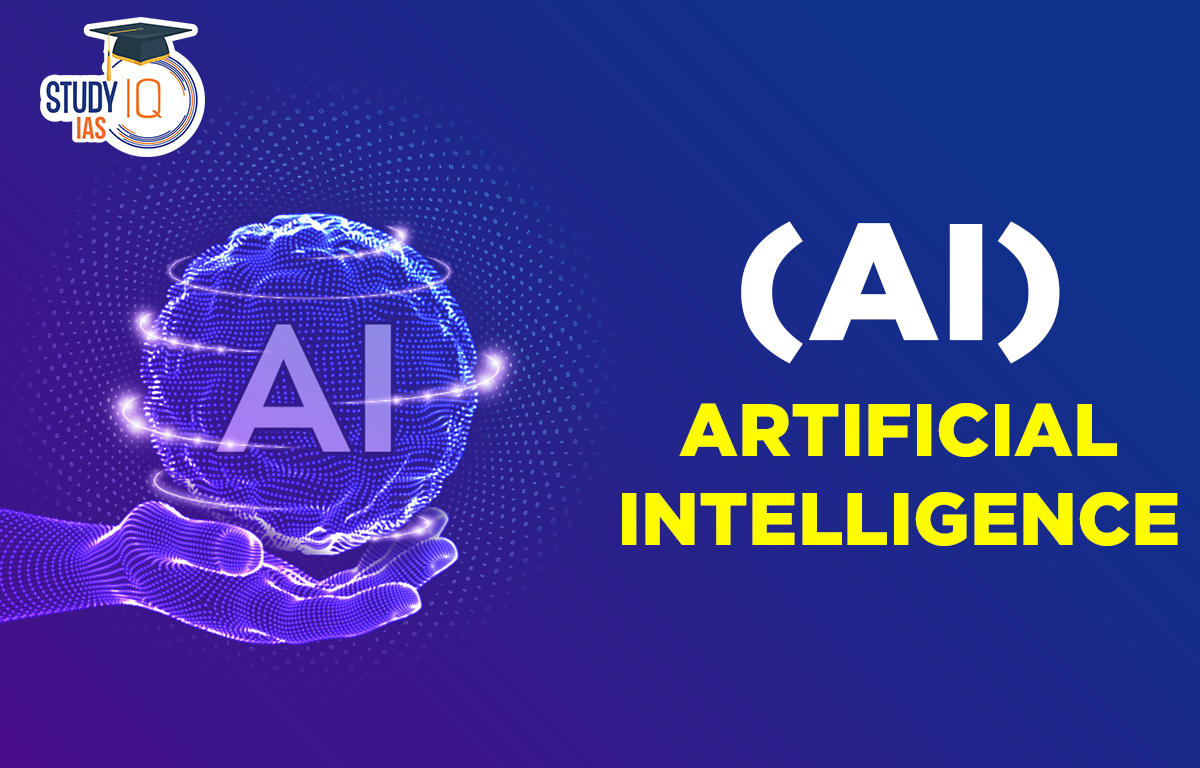Table of Contents
Context: McKinsey & Company said that depending upon various adoption scenarios, automation will displace between 400 and 800 million jobs by 2030.
About Artificial Intelligence (AI)
- It refers to the simulation of human intelligence in machines that are programmed to think like humans and mimic their actions.
- It may also be applied to any machine that exhibits traits associated with a human mind such as learning and problem-solving.
- It is based on the principle that human intelligence can be defined in a way that a machine can easily mimic it and execute tasks, from the most simple to those that are even more complex.
- The goals of artificial intelligence include computer-enhanced learning, reasoning, and perception.
- AI is being used today across different industries from finance to healthcare.
AI can Traditionally be Divided into AGI and ANI
| Artificial General Intelligence (AGI) | Artificial Narrow Intelligence (ANI) |
| AGI is designed to be capable of performing a wide variety of intellectual tasks.
AGI is designed to be flexible and adaptable, capable of handling new tasks and situations without human intervention. It is often referred to as ‘unsupervised learning’ which means that the AI system can learn from data without being explicitly programmed to do so. AGI’s cognitive architecture: It is a system that includes perception, attention, memory, language, and reasoning. AGI is envisioned as having the ability to perform any intellectual task that a human can do, and to apply knowledge learned in one context to new, unfamiliar situations. Fear of AGI: Very real possibility that an AGI system continues to learn and make decisions that even its creators cannot possibly predict. This lack of ‘control’ is what leads to the overarching fear of AI. AGI is still largely in the realm of theoretical research and development. |
It is designed to perform a single or a narrow set of related tasks.
ANI is typically trained using machine learning algorithms such as supervised learning, unsupervised learning, or reinforcement learning. These algorithms are designed to optimise the AI system’s performance on a specific task or set of tasks, but they are not necessarily capable of reasoning or learning in the way that humans do. It remains eminently controllable even if we do not fully understand the mechanics of how it gets so good at the task it is programmed for. ANI is already in widespread use in a variety of industries and applications including image recognition, natural language processing, and predictive analysis. Example: ChatGPT – It is a chat bot, which allows users to engage in a conversation about a variety of topics like personal hobbies, interests, or current events and generates human-like responses in text form. |
Concerns with AI
- AI can lead to the displacement of some jobs.
- Impact of AI on jobs and industries is likely to be uneven, with some workers and industries experiencing greater disruption than others.
- Workers in low-wage and low-skill occupations may be more vulnerable to job loss than those in high-wage and high-skill occupations.
Significance of AI
- They are particularly adept at automating routine and repetitive tasks, such as data entry and customer service which could perhaps replace low-skill level workers.
- Innovation: Many experts believe that AI will transform industries in significant ways, creating new opportunities for growth and innovation.
- In industries like healthcare, for example, AI can optimise transportation networks, develop new materials, and even simplify manufacturing processes.
- Demand for new jobs: AI may create demand for workers with expertise in machine learning, data science and natural language processing and project management.
- It may also create opportunities for workers to specialise in areas where human judgement and creativity will remain critical.
- Push for Skill: AI will push workers to acquire new skills and knowledge in order to remain employable.
- It could require significant investment in education and training programs, as well as new approaches to lifelong learning and skills development.
Conclusion
- It is evident that the technology is likely to have significant implications on the future of work.
- It will be important for policymakers, businesses, and workers to take proactive steps to manage this transition and ensure that the benefits of AI are shared widely across society.


 SSC Stenographer 2024 Notification Out a...
SSC Stenographer 2024 Notification Out a...
 IB SA MTS Final Result 2024 Out at mha.g...
IB SA MTS Final Result 2024 Out at mha.g...
 Model Skill Loan Scheme, Eligibility, Re...
Model Skill Loan Scheme, Eligibility, Re...

















